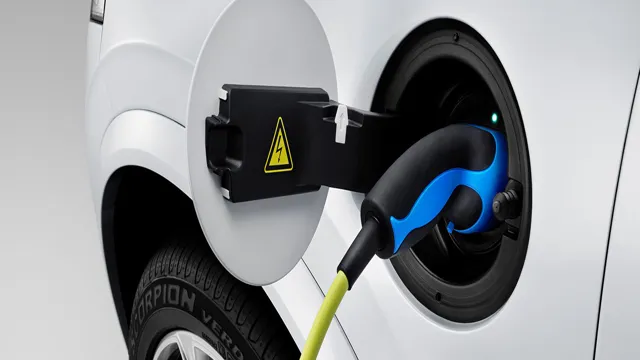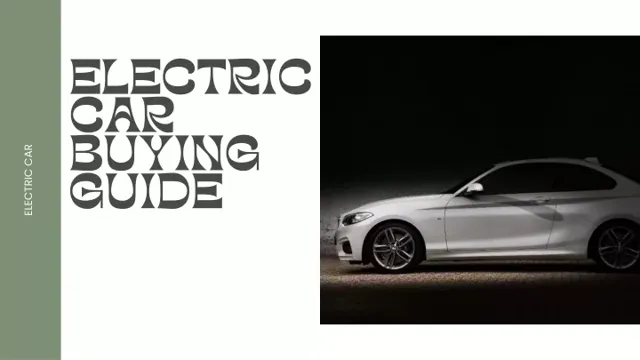Juice up Your Drive: The Ultimate Electric Car Charging Guide
If you’re a proud electric car owner, then you know the importance of charging your vehicle. Finding a convenient and reliable electric car charging station can make all the difference, especially if you’re planning a long road trip. These days, electric car charging stations are popping up more frequently, making it easier to travel without the fear of running out of power.
But what are the different types of electric car charging stations? Which one is right for your vehicle and driving needs? In this blog, we’ll explore the world of electric car charging and give you the lowdown on everything you need to know. So buckle up and let’s dive in!
Types of Chargers
If you are new to electric vehicles, it’s important to know that there are different types of chargers available. The most common types are Level 1, Level 2, and DC fast charging. Level 1 charging is the slowest, and it typically takes 12 to 24 hours to fully charge a battery using a standard 120-volt outlet.
Level 2 chargers are faster and can be installed at home or in public locations. They use a 240-volt outlet and can fully charge a battery in as little as four hours. DC fast charging is the fastest option and is commonly found at publicly accessible charging stations.
It allows electric vehicles to recharge up to 80% battery capacity in as little as 30 minutes. Whether you choose a Level 1, Level 2, or DC fast charger depends on your needs and where you plan to drive your electric vehicle. Knowing the different types of chargers available can make your driving experience much more convenient and efficient.
Level 1 Charger
A Level 1 charger is a basic electric vehicle (EV) charger that uses a standard household outlet to charge your car. It provides a slow but steady charging experience, typically taking anywhere from 8 to 12 hours for a full charge. Level 1 chargers are often the most affordable option, but they may not be suitable for everyone’s needs.
If you have a long daily commute, for example, you might find that a Level 1 charger does not provide the necessary charge for your vehicle. Additionally, Level 1 chargers may not be suitable for those who want to take long road trips in their EV. Nonetheless, these chargers are a good option for those who only require occasional charging, and they’re especially useful for people who can plug in their EV overnight or for several hours at a time.
Overall, Level 1 chargers are a popular entry-level option for EV owners who want to save money and energy.

Level 2 Charger
A Level 2 charger is one of the most commonly used types of chargers for electric vehicles. These chargers provide faster charging times compared to Level 1 chargers, allowing you to recharge your EV more quickly while you’re out and about. Level 2 chargers are typically found in public charging stations, parking lots, and even in some residential garages.
They use a 240-volt system, which means they can charge your EV up to seven times faster than a standard 120-volt Level 1 charger. This can be a huge time saver if you’re traveling long distances or need to charge your vehicle quickly. With a Level 2 charger, you won’t have to worry about running out of power on the road, ensuring a more stress-free and enjoyable EV driving experience.
So if you’re an EV owner, it’s worth investing in a Level 2 charger to make sure you’re always ready to hit the road.
DC Fast Charger
DC Fast Charger DC fast chargers are a type of electric vehicle (EV) charging station that can charge an EV much faster than Level 1 or Level 2 chargers. DC fast chargers use direct current (DC) electricity to quickly charge an EV’s battery, allowing drivers to get back on the road in a shorter amount of time. There are three main types of DC fast chargers: CHAdeMO, CCS, and Tesla Supercharger.
CHAdeMO chargers are used mainly by Japanese automakers like Nissan and Mitsubishi, while CCS chargers are used by European and American automakers like BMW and Ford. Tesla Superchargers, as the name implies, are exclusive to Tesla vehicles. Each type of charger requires a different plug, so it’s important for EV owners to make sure they are using the right charger for their vehicle.
Overall, DC fast chargers are an essential part of EV infrastructure, allowing drivers to travel longer distances and rely more heavily on electric transportation.
Charging at Home
As electric cars become more popular, it’s important to understand how to charge them at home. To start, you’ll need a charging station, also known as an EVSE (Electric Vehicle Supply Equipment), and a reliable power source. Most home charging stations can be plugged into a standard 120-volt outlet, but it’s recommended to install a 240-volt outlet for faster charging times.
Once you have your equipment set up, charging your electric car at home is as simple as plugging it in. It’s important to note that charging times can vary depending on your vehicle’s battery capacity and the level of charge, so it’s important to plan ahead for longer trips. With the right equipment and a little bit of planning, charging your electric car at home can be easy and convenient.
It’s a small step towards reducing your carbon footprint and helping the environment.
Installing a Home Charger
Installing a home charger is one of the best ways to ensure that your electric vehicle is always charged and ready to go. It’s a simple process that involves selecting the best charger for your vehicle, finding the right location for installation, and following the manufacturer’s instructions to connect the charger to your home’s electrical system. To get started, you’ll need to determine which charger is best for your vehicle.
There are many options on the market, ranging from basic home chargers to high-performance models that can charge your vehicle in just a few hours. Some chargers also come with additional features, such as the ability to monitor your charging progress or integrate with smart home systems. Once you’ve selected the right charger, the next step is to find the best location for installation.
Ideally, you’ll want to install the charger in a location that’s easily accessible, but also safe and convenient. This might be in your garage, on the side of your house, or in a designated parking area. Finally, be sure to follow the manufacturer’s instructions carefully when connecting the charger to your home’s electrical system.
This is an important step that will ensure that your charger operates safely and efficiently. Overall, installing a home charger is a straightforward process that can make owning an electric vehicle even more convenient. With the right charger and location, you’ll never have to worry about running out of power on your daily commute or weekend road trip.
Calculating Charging Time
If you’re an EV owner, it’s important to know how long it will take to charge your vehicle at home. Charging time depends on a few factors such as the vehicle’s battery capacity and the power of the charging station. The higher the battery capacity, the longer it will take to fully charge.
However, the charging station’s power plays a crucial role in the charging time as well. For example, a high-powered Level 2 charging station can charge your vehicle twice as fast as a standard Level 1 charging station. To get an estimate of charging time, you can use an online charging calculator or consult your vehicle’s manual.
It’s also important to note that charging times may vary depending on the outside temperature and the charging infrastructure in your local area. Overall, charging at home is a convenient and cost-effective option for EV owners, but it’s essential to be aware of the charging time to plan accordingly.
Managing Energy Costs
If you’ve made the smart choice to buy an electric car, charging it at home can be a convenient and cost-effective solution. By plugging your EV into a standard wall outlet, you can charge at a rate of about 4 miles per hour, which can be fine for overnight charging. However, if you want a faster charge, you may need to invest in a Level 2 charging station, which can provide up to 25 miles of range per hour of charging.
While this might seem costly, it’s important to keep in mind that you’ll be saving money in the long run by avoiding the high costs of fuel. Plus, many states and cities offer incentives and rebates for EV charging equipment, so it’s worth doing some research to see what you qualify for. By charging your electric car at home, you’ll enjoy the convenience of never having to visit a gas station again, and you’ll be doing your part in reducing air pollution and supporting a more sustainable future.
Public Charging Stations
If you’re considering purchasing an electric vehicle, one of the biggest questions on your mind will likely be about charging. Luckily, there are tons of public charging stations available to help you out when you’re on the go! These charging stations can typically be found at places like parking garages, malls, and even some gas stations. Some cities also offer free charging at specific locations.
It’s important to do your research ahead of time and plan out your charging stops to ensure you won’t be stuck with a dead battery. You can use apps like PlugShare or ChargePoint to locate available charging stations and make sure they’re compatible with your specific vehicle. With the abundance of public charging options available, you shouldn’t have to worry about running out of power.
So go ahead and hit the road with confidence, knowing that you have access to electric car charging wherever you may roam!
Finding Nearby Stations
If you are looking for a quick and easy way to find nearby public charging stations for your electric vehicle, there are several helpful tools available to make your search a breeze. Many public charging networks have their own mobile apps or websites that allow you to search for available charging stations in your immediate area. Additionally, plugshare.
com and other similar websites offer a database of charging stations that you can search through by location, type of charging connection, and more. Some electric vehicle manufacturers also provide their own personalized charging station locator tools, which can be accessed through their mobile apps or websites. With so many resources available, finding a convenient and reliable public charging station for your electric vehicle has never been easier!
Payment Methods
When it comes to paying at public charging stations for your electric vehicle, there are a variety of payment methods available. Some charging stations allow you to pay directly through a mobile app, while others require you to have a specific charging network membership. Some payment options may also allow you to prepay for charging time or pay per kilowatt-hour usage.
One of the benefits of paying through a mobile app is the ability to remotely monitor the charging process and receive notifications when your vehicle has finished charging. It’s important to research the payment options available at charging stations in your area, as well as any additional fees or membership requirements. This ensures a smooth and hassle-free charging experience for you and your electric vehicle.
Charging Etiquette
Electric cars are becoming more common, and with them comes a new set of charging etiquette. As electric car charging stations become more ubiquitous, it’s essential to be respectful of others who might need to use them. A good rule of thumb is to charge only for as long as necessary to reach your destination, leaving the charger available for someone else.
It’s also courteous to unplug your car as soon as it’s fully charged so that others can use the station. The electric car charging guide also recommends parking your vehicle straight in the parking space, so it doesn’t block other drivers. Remember that electric car charging stations are a shared resource, and by following a few simple rules, we can all help ensure their availability when we need them.
Conclusion
In the end, charging an electric car is a lot like going to the gym. It may seem like an inconvenience at first, but once you get into the routine, you’ll wonder how you ever lived without it. Just as you need to find the right workout regimen to get the results you want, you need to find the right charging strategy for your driving needs.
But if you’re willing to put in the effort, the rewards are undeniable: lower fuel costs, a cleaner environment, and the satisfaction of knowing that you’re doing your part to make the world a better place. So, don’t be afraid to plug in, charge up, and enjoy the ride!”
FAQs
What is an electric car charging guide?
An electric car charging guide is a manual or document that provides information on how to charge an electric vehicle.
What are the different types of electric car charging?
There are three types of electric car charging: Level 1 charging, Level 2 charging, and DC fast charging.
How long does it take to fully charge an electric car?
The time it takes to fully charge an electric car varies depending on the battery size, the charging station used, and the level of charging. In general, Level 1 charging can take up to 24 hours, Level 2 charging can take 4-8 hours, and DC fast charging can take 30-45 minutes.
Can I charge my electric car at home?
Yes, you can charge your electric car at home using a Level 1 or Level 2 charging station. It is important to have an electrician inspect your home’s electrical system to ensure it can handle the power requirements of the charging station.
What are the costs associated with electric car charging?
The cost of electric car charging varies depending on the electricity rates in your area and the charging station used. In general, Level 1 charging is the least expensive, while DC fast charging is the most expensive. Some charging stations may offer free or discounted charging for electric vehicle owners.







